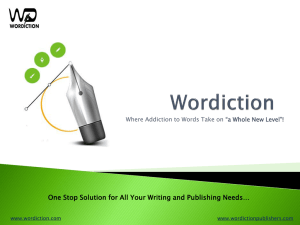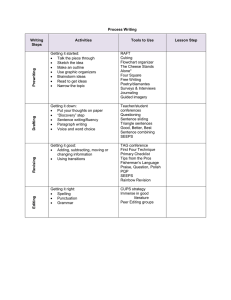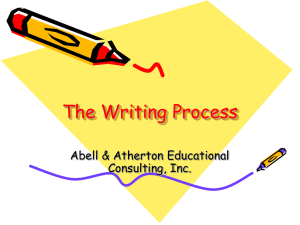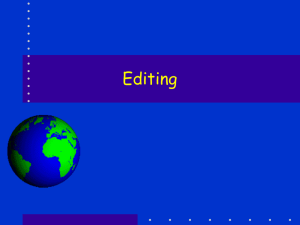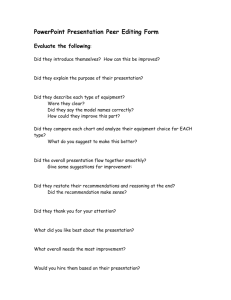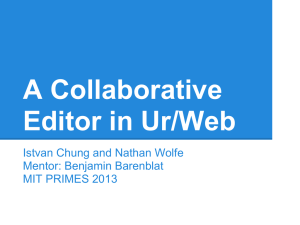Chapter 3 Presentation
advertisement
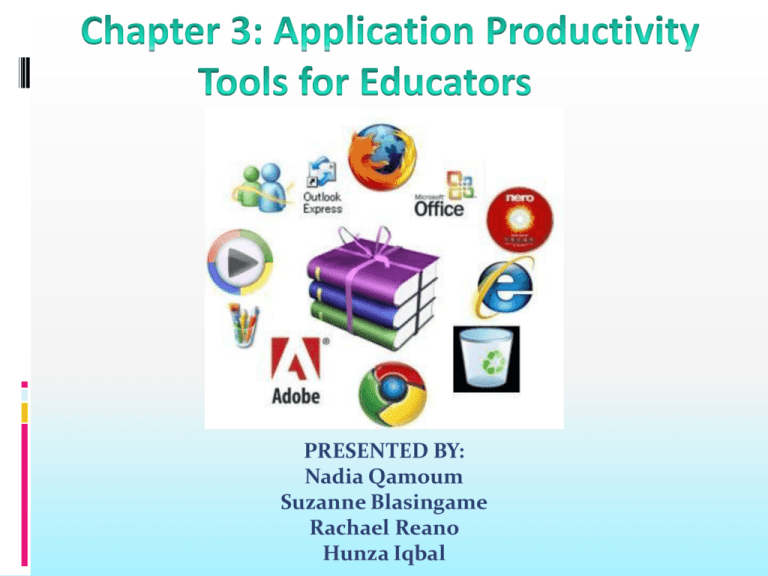
PRESENTED BY: Nadia Qamoum Suzanne Blasingame Rachael Reano Hunza Iqbal An Operating System contains two different types of software: •System Software: Which consists of programs that control the operations of the computer. System software is used as the interface between the user (application software) and the computers hardware. •Operating System: which is a type of software. It contains instructions that coordinate all the activities of the hardware devices in a computer. The system also allows you to run application software. • Microsoft Windows • Windows XP • Windows Vista • Windows 7 • Macintosh Operating System or MAC OS Software's are designed to communicates with the user in a certain way, through user interface. There are two types of User Interface: 1. User Interface: Which controls how the user enters data or instructions and how the information is presented on the screen. 2. Graphic User Interface (GUI): It combines text, graphics, and other visual cues to make software applications easier to use. • • • • • • • • • AutoCorrect Auto Format Collaboration Columns Grammar Checker Ink Input Macros Mail Merge Reading Layout • • • • • • • • Research Smart Tags Tables Templates Thesaurus Tracking Changes Voice Recognition Web Page Development A collection of individual application software packages, sold as a single package. Suites are less expensive than buying individual applications. All applications are installed at once. Applications in suites are designed to work as part of a larger set, sharing common features. Document is a piece of work created with an application and saved on a storage medium with a unique file name. Creating: involves developing a document of your choice. ( Word Document , PowerPoint, Spread Sheet ....etc. ) Editing: is the process of making changes to the document.( Fixing the misstates and adding thing you might have missed ) Formatting: Changing the appearance of the document. Saving: save many times while creating the document. Then at the end of its creation use the save as option. Voice Recognition Software: Speak into the computers microphone and watch your words display on the screen. ( Ex. Note Taking Software.) Productivity Software: Help make people be more effective while performing daily duties .( Ex. Word Processing , Spreadsheets, Presentations graphics, Data base , personal information. ) Personal Information Managers: Software application that is installed on PDA’s , Smart Phones ( I Phones ). Helps you stay organized Video: consists of full-motion images played back at various speeds. Video editing software allows you to either edit or add audio components. Can help you modify a part of a video, called a clip. For example you can: Add and remove clips Add special effects like sounds, banners, credits, text and more. PC and Macintosh computers include extensive audio and video editing compatibilities. Popular programs used by teachers include iMovie, iLife, Movie Maker, and Final Cut. You and your student can even make your own videos using those programs. Special needs software: also called assistive technologies software, is designed specifically for students with physical impairments or learning disabilities. It helps them in completing school assignments and everyday tasks. speech synthesis software: software used by students with speech and vocal muscle disorders to help them participate in classroom discussions. This software reads the text out loud to them. Includes programs like: text enlargement talking calculators, and more. Today, there are several software available to teachers to use as tools to enhance teaching and learning methods for students with special needs. When students use software for learning with assistive devices, such as touch screens and adaptive keyboards, their ability to succeed increases, and that is our main goal.



